- Home
- Alison Weir
Elizabeth of York Page 4
Elizabeth of York Read online
Page 4
Sheen Palace dated from the early fourteenth century, when the original manor house had been owned by Isabella of France, wife of Edward II. After her death in 1358, her son, Edward III, had spent a fortune converting it into a fabulous palace. It became his favorite residence, and he died there in 1377. Appropriately, the name “sheen” meant “beautiful” or “bright.” In 1395, after his beloved queen, Anne of Bohemia, had died there of plague the year before, Richard II had the palace “utterly destroyed.” In 1414, on an adjacent site, Henry V erected what his chronicler, Thomas of Elmham, described as a “delightful mansion, of skillful and costly architecture, becoming to the royal dignity.” Completed by Henry VI, and moated, it was built of Caen stone around two courts, with the royal Privy Lodgings overlooking the River Thames, and was decorated in brilliant hues with stained-glass windows in azure, red, and purple tones. Edward IV’s rose-en-soleil badge featured prominently in the ceiling moldings alongside “antelopes, swans, harts, hinds,” and lions.32 This was the house in which Elizabeth spent part of her childhood.
The daily regimen followed by Elizabeth and Mary was probably similar to that later laid down by the King for their brother, the future Edward V, when he was three years old, and the routine described in the household ordinances of their paternal uncle, George, Duke of Clarence, Edward IV’s younger brother.33 The children would have been roused around 6:00 A.M., so that they could “get up at a convenient hour according to [their] age” in time to attend Matins in their bedchamber. Then the bell rang for them to go to Mass, which was sung by the household chaplain in their chapel or their closet. The regular observance of the liturgical services was seen as essential for the children of the King. Immediately after Mass they had breakfast, which might have consisted of bread, butter, ale, fish, meat, or eggs. Dinner was at 10:00 or 11:00 A.M.; it was “honorably served” with dishes “borne by worshipful folks” and liveried esquires, and might have lasted for up to two hours. During mealtimes, edifying and noble tales would have been read out to the royal sisters. That the young princesses lived in some state is evidenced by the appointment of a knight of the trencher and a page of the chamber to be in continual attendance upon them.34
After dinner, the girls would have been expected to wash and perhaps have a nap. Later, drinks and bread were served before the bell summoned everyone to Evensong. Supper would be served at 4:00 P.M. Evening was customarily a time of “honest disports,” recreation such as games and music, until bedtime, which for Elizabeth and Mary was probably at 8:00 P.M., after a snack called “all night” (comprising bread, ale, or wine) had been served. Although their attendants were no doubt ordered to “enforce themselves” to make the children “merry and joyous toward bed,” household accounts of the period contain barely any references to toys.35
After the traverse—the door curtain—was drawn at 8:00 P.M., no one but the princesses’ own attendants might enter their chamber. At night, a candle or cresset would be left burning there, and they slumbered safely, for the outer gates were barred at 9:00 P.M. in winter and 10:00 P.M. in summer, porters were on watch, and watchmen patrolled three or four times a night, checking every chamber. Their brother would have someone watching over him all night, lest disease rob the King of his “precious son and gift,” and it follows that his older sisters’ attendants watched over them too.36
Religious instruction began at a very early age, and children were expected to know their psalter by the age of four.37 Feast days—notably Candlemas, Easter, St. George’s Day, Whitsun, All Hallows, and Christmas, as well as a crowded calendar of saints’ days—were marked by special services in chapel, sermons, and entertainments, and the children made offerings at Mass on holy days. On Maundy Thursday the girls would have given gifts to the poor; on Good Friday they would have been taught to creep to the Cross on their knees. During Lent and Advent they were expected to fast or abstain from meat. At New Year they would have received Yuletide gifts, as was customary; on Twelfth Night they would have been allowed to join the feasting and revelry; and no doubt they laughed at the antics of the Lord of Misrule on the Feast of the Epiphany. Such was the cycle of their year.
Religion played a major role in Elizabeth’s upbringing. The great houses in which she was reared had chapels, oratories, and closets with sumptuous furnishings and tapestries, brilliant stained glass, illuminated psalters, primers, missals, offices, and other devotional books, rich altar cloths, bejeweled crucifixes, statues of the Virgin and the saints, painted retables, gleaming vestments, gold and silver chalices and candlesticks, carpets, chairs for the King and Queen, and an organ. Often the royal pew was in a gallery above the body of the chapel where the household worshipped. Elizabeth’s day would have been punctuated by bells announcing Mass and the liturgical hours, her ears regularly assailed by the singing of antiphons and polyphony, her nose used to the smell of incense. Small wonder that she grew up to be deeply pious.
Sometimes the little princesses were brought to court, to be paraded at festivals and state visits. There they joined their mother’s retinue, learning by her example (and that of her ladies) manners, music, singing, dancing, embroidery, and anything else considered needful to prepare them for their future roles as royal wives and mothers and the ornaments of courts. They would have been dressed in miniature versions of the luxurious attire worn by ladies of high rank, learning as they grew older to manage heavy fabrics, long court trains, and elaborate headdresses. Good deportment was taught from an early age.
To the young princesses, their parents—whom they did not see often—would have appeared as awe-inspiring figures, distant and worthy of the highest reverence, not only because they were royal, but also because children were brought up to revere, honor, and obey their parents, and be dutiful toward them all their lives. How much more daunting that would have been when your parents were the King and Queen! Each evening, whenever they were together, they would kneel before their father and mother and crave their blessing, which was given “in the name of the Father, the Son, and the Holy Ghost.”38
Good manners and courtesy were drummed into them. The Babees’ Book of 1475, a manual of courtesy for the young, exhorts children to cut their bread with a knife, eat quietly, wipe their mouths and hands after drinking, share the dishes served to them with guests, “and in your feeding look ye appear goodly, and keep your tongue from jangling, and always advance yourself in virtue. Sweet children, always have your delight in courtesy and in gentleness, and eschew boisterousness with all your might.” The young were taught that they must never lean their elbows on the table, pick their noses, teeth, or nails at mealtimes, eat food with their knives, or pick up meat with their fingers. The humanist scholar and theologian, Desiderius Erasmus, insisted that a child should have “a kind, modest, and honest look”; it should not speak unless spoken to, have a furrowed brow or a dirty nose—signs of bad breeding—or wipe its nose on its clothing, or suck in or puff out its cheeks, stick out its tongue, yawn, laugh immoderately, spit, or be seen with messy hair or uncleaned teeth. Swearing was seen as particularly offensive, and children and servants were often punished for it. Elizabeth’s elders would have enforced rules like these. Naughty children were often beaten, and it was felt that indulging or spoiling a child would lead to the need for physical chastisement later: “who spareth the rod hateth the child.”39
Edward IV’s officers were instructed to restrain the chatter of young guests at the King’s table. There is some evidence that royal mealtimes were kept in silence, or possibly only a low murmur of conversation was permitted. The King was insistent that no “customable swearer, brawler, backbiter, common hazarder, or adulterer” be allowed to work in his children’s households, and all conversation in their presence was to be of “virtue, honor, cunning, wisdom, and deeds of worship [renown].” Those who came late to Matins were punished by being served only bread and water at dinner, and any who drew weapons in the household, or went to law without the permission of the Queen’s council, were t
o be clapped in the stocks or dismissed.40
Like most females, the princess and her sisters would have been reared to an awareness that they had been born of an inferior sex, and that consequently their freedoms were limited—although the example of their mother would have demonstrated that women of rank could be enormously influential, albeit with the consent of their menfolk. Medieval women were regarded variously as weak and passive; or as domineering harridans, temptresses, or whores. It was held that young girls needed to be protected from themselves so that they could be nurtured as chaste and submissive maidens and mothers.
The princesses would have grown up thinking it normal that their marriages would be arranged for them, and that it was their duty to render obedience first to their parents, and later to their future husbands. Marriage was seen as a desirable estate for both sexes, and for most women it defined their role in life, for with monasticism in decline, relatively few became nuns in this era. It was expected that royal and aristocratic women would marry, and marry well; and it was rare to find one who died a spinster, unless she had become a nun. Thus the upbringing of girls was geared toward finding a suitable husband, one of the right social class and standing, and it was incumbent largely upon mothers to ensure that they did, and to see that their daughters grew up chaste, discreet, humble, pious, and obedient. In the early years, queens, of course, delegated much of this role to the lady mistress of the nursery, but they did usually take a keen interest in preparing their daughters for marriage.
A girl’s future status, happiness, and success depended largely on the marriage she made, her relationship with her husband, and her ability to perform her wifely duties. Most aristocratic brides brought with them dowries consisting of lands, property, and perhaps money; if they were royal, their persons would be used to cement political treaties between princes, to secure peace, prosperity, or an ally in war. A father marrying off his daughter would also look to her future financial security, negotiating a jointure, or living, for her maintenance during her married life and in the event of her widowhood; often it comprised rents from estates, of which even a queen’s jointure was largely made up. Upon marriage, a woman’s property and title (if she had one) transferred to her husband; she retained no control over any of it.
The desirability of a wife therefore lay not in her looks or character, but in her wealth and breeding. Marriage was essentially a contract. Love was not a prime consideration: it was hoped that it would develop after marriage, and indeed it was the duty of a wife to love her husband and to remain unquestionably faithful. Nevertheless, there is evidence that many parents did care that their children were happily married: they allowed the prospective spouses time to get to know and love each other, and on occasions would not even proceed with the wedding if either objected. At the other end of the scale there were parents who beat their daughters into submission,41 while nearly all frowned on clandestine marriages, and kept idle hands and minds busy to avoid them from being unsuitably diverted by bold and importunate young men.
Once wed, a married woman had no legal identity of her own. She was expected to render obedience to her husband as her lord and head, for he was to be to her as Christ was to the Church, and he had the legal right to punish and chastise her. Toward him she was to show love, gentleness, and submission.
Nevertheless, women of Elizabeth’s class could exercise power, patronage, and authority; they might even venture into politics. Yet all these advantages came only through marriage: what influence and autonomy they enjoyed was entirely at the discretion or behest of their husbands, and not all husbands were prepared to allow their wives such leeway.
Such was the future that awaited Elizabeth of York, but the most important event on her horizon at this time was not some distant marriage but the arrival of her sister, Cecily, on March 20, 1469, at Westminster. The birth of a third daughter, despite her being “very handsome,” was a disappointment to the King. He and his lords “rejoiced exceedingly, though they would have preferred a son,”42 especially now, when Edward’s throne was under threat. With a son to follow him, a monarch’s position was invariably more secure. No one imagined for a moment that Elizabeth, the King’s eldest daughter, might rule after him as Queen. Her value was purely matrimonial.
Events of which the young Elizabeth can have had little awareness, but would adversely affect her life, were gathering momentum. By 1468 rumors were rife of conflict between “the Earl [of Warwick] and the Queen’s blood.” Warwick could not stomach “the great rule which the Lord Rivers and his blood bare at that time within the realm,”43 and could not conceal his anger when, in 1468, the King married his sister Margaret to Charles the Bold, Duke of Burgundy. Warwick, who pursued Charles the Bold for years “with a most deadly hatred,”44 had favored an alliance with France, Burgundy’s enemy, but the Wydevilles had used “their utmost endeavors to promote the marriage, and were favoring other designs to which he was strongly opposed.” This finally alienated the earl,45 and drove him, in 1469, to form an alliance with the King’s disaffected younger brother, George, Duke of Clarence, whom Elizabeth had displaced in the line of succession; whereupon the two men began intriguing against Edward IV.
Clarence was then twenty, tall, fair, and regal. He had a surface charm and “a mastery of popular eloquence,”46 but these barely masked a weak, discontented, and vicious character. Edward had been very generous to him, but Clarence was jealous and hungry for power. Warwick now bolstered Clarence’s pretensions by offering to overthrow Edward, make him King, and marry him to Isabella, the elder of his two daughters; as Warwick had no son, these girls were the greatest heiresses in England. Edward’s brothers, Clarence and Richard, Duke of Gloucester, had repeatedly sought them in marriage, but the King had consistently refused, foreseeing that such alliances would enhance the already disconcerting power of the Nevilles. Naturally this had given Warwick further cause for grievance.
In July 1469, Clarence openly defied the King and married Isabella Neville in Calais, where Warwick was captain. Then he and Warwick sailed back to England, where they rose in arms against Edward IV, whom they took prisoner at the Battle of Edgecote in August 1469. They then spread the story that the King was a bastard, the son of Cecily, Duchess of York, and an unnamed English archer.
This story has been much debated in recent years, after historian Dr. Michael Jones claimed in 2002 that it was the truth.47 His theory naturally has a crucial bearing on the legitimate right of Edward IV and his children, including Elizabeth, to inherit the crown. Sensationally, Dr. Jones asserted that Edward’s bastardy compromised every sovereign’s title since 1461, and that the true king of Great Britain should be Michael Abney-Hastings, an Australian forklift-truck driver who is descended from George, Duke of Clarence. But in 1485, Henry VII was confirmed as King by Parliament, before he married Elizabeth of York, the Yorkist heiress. His title did not legally depend on hers, and thus he and his descendants were—and still are—the lawful occupants of the throne.
Dr. Jones claimed that Edward IV, who was born on April 28, 1442, was conceived when Richard, Duke of York, was away fighting the French at Pontoise, near Paris, at which time Cecily Neville was allegedly having an affair with an English archer called Blaybourne, of the Rouen garrison. What Dr. Jones discovered was an entry in the registers of Rouen Cathedral under the year 1441, showing that York’s campaign in Pontoise lasted longer than historians had previously thought. The registers also revealed that Edward was christened in the private chapel of Rouen Castle, while his brother, Edmund, born in May 1443, also at Rouen, was afforded a bigger christening in the cathedral—from which Dr. Jones inferred that he was probably the true heir.
York must have known about the contrast between the christenings; it was probably his decision to make more of Edmund’s, as he had named his second son heir to his French lands, so a high-profile baptism in Rouen was appropriate. It is scarcely credible that, knowing Edward was not his son, he arranged a grander christening for the true-bor
n Edmund—thus publicly proclaiming his cuckoldry to the world. He is more likely to have disowned Edward, and his failure to do so would be incomprehensible in an age in which the laws of inheritance were rigidly observed and enforced by the aristocracy, and blood descent was of prime importance. The landed classes took such a serious view of adultery in a noblewoman that the law provided for her to be executed at her husband’s behest, and even kings acknowledged that the husband’s word was law, and preferred not to interfere.48 It is hard to believe that York, who was proud of his royal lineage, would have overlooked the presence of a cuckoo in the nest who stood to inherit everything he had.
The quiet baptism can easily be explained by a need for haste, if there was concern because the infant was premature or too weak or sickly to survive. In support of this, we have Cecily’s obstetric history. Before Edward was born, she had produced two children, one of whom had died soon after birth in 1441; four of the children she bore later would also die young. The loss of five children out of twelve, while not uncommon for the time, might suggest that there was a history of premature birth, which may be one reason why Edward was christened quietly.
There are other problems with Dr. Jones’s theory, not least of which is the fact that Cecily’s whereabouts in the crucial period are unknown. There is no primary evidence from the 1440s that mentions Blaybourne. The earliest historical reference to Edward IV’s alleged bastardy occurs in 1469,49 when Warwick and Clarence used—and probably invented—it as propaganda in order to have him deposed. No one seems to have taken their assertion seriously. Warwick had earlier spread false rumors that Margaret of Anjou’s son was the fruit of adultery. Clarence, it seems, was ready to seize on any pretext to impugn his brother’s line so that he could claim the throne, and even asserted that Edward IV’s marriage was invalid because he had violated “established custom” by marrying a widow.50

 Richard III and the Princes in the Tower
Richard III and the Princes in the Tower Britain's Royal Families: The Complete Genealogy
Britain's Royal Families: The Complete Genealogy The Lady in the Tower: The Fall of Anne Boleyn
The Lady in the Tower: The Fall of Anne Boleyn Six Wives of Henry VIII
Six Wives of Henry VIII Elizabeth of York: A Tudor Queen and Her World
Elizabeth of York: A Tudor Queen and Her World Captive Queen
Captive Queen Innocent Traitor
Innocent Traitor The Marriage Game
The Marriage Game A Dangerous Inheritance
A Dangerous Inheritance Katherine of Aragón: The True Queen
Katherine of Aragón: The True Queen The Marriage Game: A Novel of Queen Elizabeth I
The Marriage Game: A Novel of Queen Elizabeth I Princes in the Tower
Princes in the Tower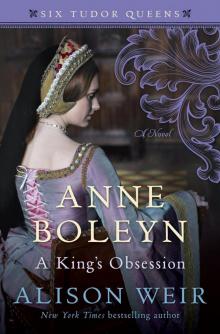 Anne Boleyn: A King's Obsession
Anne Boleyn: A King's Obsession Traitors of the Tower
Traitors of the Tower Mistress of the Monarchy: The Life of Katherine Swynford, Duchess of Lancaster
Mistress of the Monarchy: The Life of Katherine Swynford, Duchess of Lancaster Queens of the Conquest: England’s Medieval Queens
Queens of the Conquest: England’s Medieval Queens Eleanor of Aquitaine: A Life
Eleanor of Aquitaine: A Life Mary, Queen of Scots, and the Murder of Lord Darnley
Mary, Queen of Scots, and the Murder of Lord Darnley Henry VIII: The King and His Court
Henry VIII: The King and His Court Queen Isabella: Treachery, Adultery, and Murder in Medieval England
Queen Isabella: Treachery, Adultery, and Murder in Medieval England Katheryn Howard, the Scandalous Queen
Katheryn Howard, the Scandalous Queen Arthur- Prince of the Roses
Arthur- Prince of the Roses The Wars of the Roses
The Wars of the Roses Eleanor of Aquitaine: By the Wrath of God, Queen of England
Eleanor of Aquitaine: By the Wrath of God, Queen of England Mary Boleyn: The Great and Infamous Whore
Mary Boleyn: The Great and Infamous Whore Jane Seymour: The Haunted Queen
Jane Seymour: The Haunted Queen Anna of Kleve, the Princess in the Portrait
Anna of Kleve, the Princess in the Portrait Lancaster and York: The Wars of the Roses
Lancaster and York: The Wars of the Roses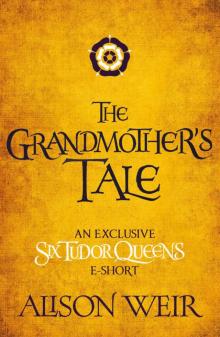 The Grandmother's Tale
The Grandmother's Tale The Princess of Scotland (Six Tudor Queens #5.5)
The Princess of Scotland (Six Tudor Queens #5.5) The Lady Elizabeth
The Lady Elizabeth Katherine Swynford: The Story of John of Gaunt and His Scandalous Duchess
Katherine Swynford: The Story of John of Gaunt and His Scandalous Duchess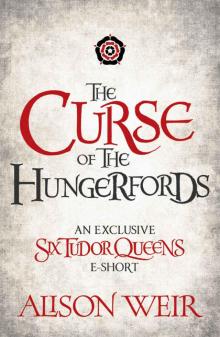 The Curse of the Hungerfords
The Curse of the Hungerfords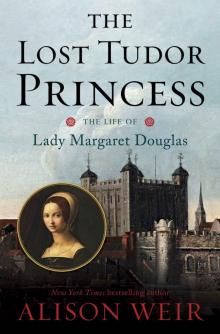 The Lost Tudor Princess: The Life of Lady Margaret Douglas
The Lost Tudor Princess: The Life of Lady Margaret Douglas Eleanor of Aquitaine
Eleanor of Aquitaine Mistress of the Monarchy
Mistress of the Monarchy The Lost Tudor Princess
The Lost Tudor Princess Henry VIII
Henry VIII Anne Boleyn, a King's Obsession
Anne Boleyn, a King's Obsession A Dangerous Inheritance: A Novel of Tudor Rivals and the Secret of the Tower
A Dangerous Inheritance: A Novel of Tudor Rivals and the Secret of the Tower Elizabeth of York
Elizabeth of York Katherine of Aragon, the True Queen
Katherine of Aragon, the True Queen Katherine Swynford
Katherine Swynford Wars of the Roses
Wars of the Roses Queens of the Conquest
Queens of the Conquest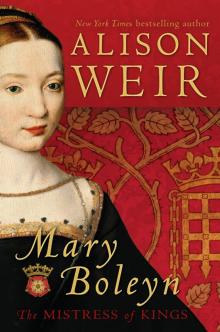 Mary Boleyn
Mary Boleyn Britain's Royal Families
Britain's Royal Families The Tower Is Full of Ghosts Today
The Tower Is Full of Ghosts Today Life of Elizabeth I
Life of Elizabeth I Anne Boleyn A King's Obssession
Anne Boleyn A King's Obssession Lancaster and York
Lancaster and York Jane Seymour, the Haunted Queen
Jane Seymour, the Haunted Queen Queen Isabella
Queen Isabella The princes in the tower
The princes in the tower